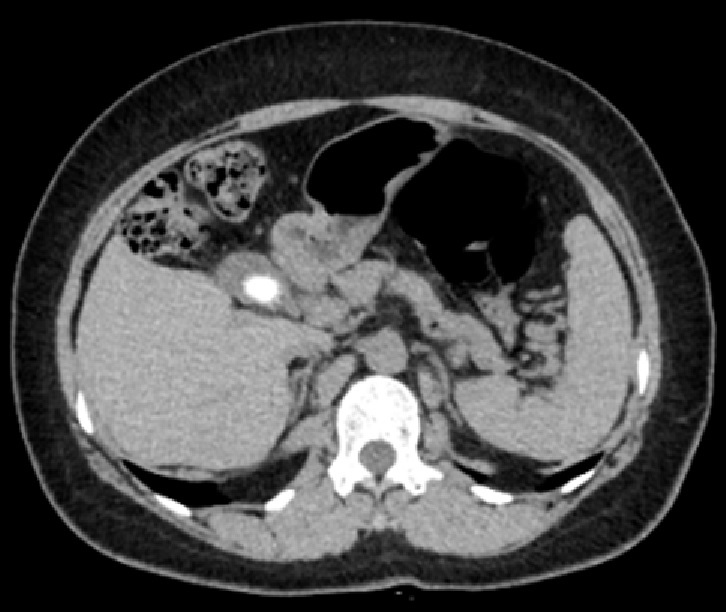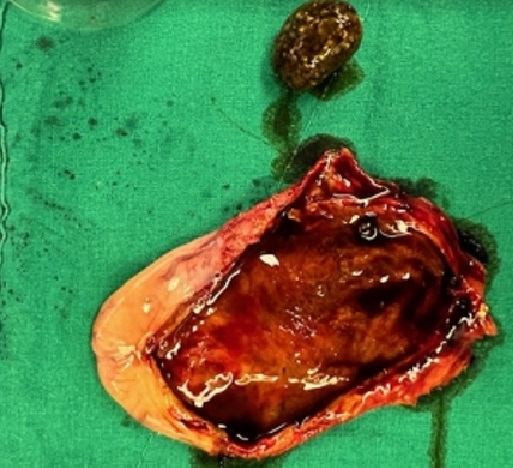How I Do It: The Very First Laparoscopic Cholecystectomy as a First-Year Resident, with a Step-by-Step Tutorial
Article information
Abstract
Since its introduction in 1987, laparoscopic cholecystectomy (LC) has been widely performed by surgeons as a standard procedure for benign gallbladder diseases. Education and training by hepatobiliary experts are important in order to safely perform LC without critical complications. The present report discusses the first LC performed by a beginner surgeon who was trained with our institutional step-by-step tutorial. The step-by-step mentor-mentee tutorial had a total of four phases: video training, observation in the operating room, participation as an assistant, and finally performing LC independently. At every step, the mentor’s approval was required to move on to the next phase. After completing visual training and observation, the mentee participated in 10 consecutive LCs as an assistant or operator. Finally, LC for a 54-year-old female patient with gallbladder stones was independently performed by the mentee under the mentor’s supervision. The patient was discharged on the first postoperative day without complications. We report a case of LC successfully performed by a beginner surgeon with the aid of a newly established step-by-step tutorial. The tutorial is expected to be applied to numerous surgical trainees after further refinement regarding its safety and feasibility.
Introduction
Benign gallbladder diseases such as gallstones and polyps are highly prevalent. Their incidence is reported to be increasing [1,2]. If operative treatment is indicated, treatment of choice is cholecystectomy. Laparoscopic cholecystectomy (LC) is considered as the standard, which is performed in most cases [3].
LC is feasible and safe when performed by trained surgeons. However, serious complications such as postoperative bleeding or bile duct injury may occur. The rate of complications is known to be associated with surgical inexperience [4]. Therefore, many previous studies have tried to identify a learning curve for LC and to establish a proper training model for surgical residents [4-6]. In this report, we present the first LC case performed by a first-year resident trained by her mentor along with a newly established institutional tutorial.
Case Presentation
An elective cholecystectomy was planned for a 54-year-old female patient with symptomatic gallbladder stone. The patient had underlying chronic liver disease associated with hepatitis B virus. She had no previous history of abdominal surgery. Her body mass index was 26.7 kg/m2. Preoperative computed tomography scans showed a 1.5 cm gallstone with mild gallbladder wall thickening (Fig. 1). This study was approved by the Institutional Review Board (IRB) of the Samsung Medical Center (IRB No: 2024-05-094).
Results
Our institutional tutorial consists of four phases (Table 1): video training, observation, participation (as a first assistant or operator) and operation.
During visual training with more than 50 video clips, the mentee wrote a case review note of every video she watched and presented it to the mentor as a result of the first phase. Followed by observation, the trainee completed the checklist by participating in 10 consecutive LCs as the first assistant or operator. Under close monitoring by the mentor, LC was independently performed by the mentee, with an operation time of 55 minutes.
The patient was discharged on postoperative day 1 without complications. Permanent biopsy showed chronic cholecystitis with a gallbladder stone (Fig. 2). At the first postoperative outpatient clinic, the patient was doing well with clear wound and normal laboratory findings.
Discussion
Ability to perform LC independently is a prerequisite for obtaining surgery board certification in Korea. However, many surgical residents have a low opportunity to perform LC by themselves, particularly in tertiary centers. This is possibly due to their workload outside operating rooms, or fellow-oriented training of pancreato-biliary surgery.
Several reports have suggested that a structured program is essential to enhancing residents’ ability to safely perform LC [4,7,8]. Therefore, we set a new manual for residents with specific duration of training and detailed instructions. We also let the trainee proceed to next process only with confirmation of the supervisor, so that the trainee could get fully acquainted with every procedure of LC. Finally, the first operation was independently and successfully performed by the trainee.
With this first use of a step-by-step LC tutorial, we identified the importance and potential effectiveness of a structured manual for surgical residents. After a further improvement of applicability and feasibility, this tutorial could be used by many other beginner surgeons to develop their basic technical skills for LC.
Notes
Disclosure
No potential conflict of interest relevant to this article was reported.
Funding
This research was supported by a grant (grant number: HI20C1234) of the Korea Health Technology R&D Project through the Korea Health Industry Development Institute (KHIDI), funded by the Ministry of Health & Welfare, Republic of Korea.
Author contributions
Conceptualization: SP, SJY; Data curation: SP, HC, HSK, SJY; Formal analysis: SP, HC, HSK, HK, SHS, IWH, JSH, SJY; Investigation: SP, HC, HSK, HK, SHS, IWH, JSH, SJY; Methodology: SP, SJY; Funding acquisition: SJY, IWH; Writing–original draft: SP, HC, HSK, HK, SHS, IWH, JSH, SJY; Writing–review & editing: SP, HC, HSK, HK, SHS, IWH, JSH, SJY.




